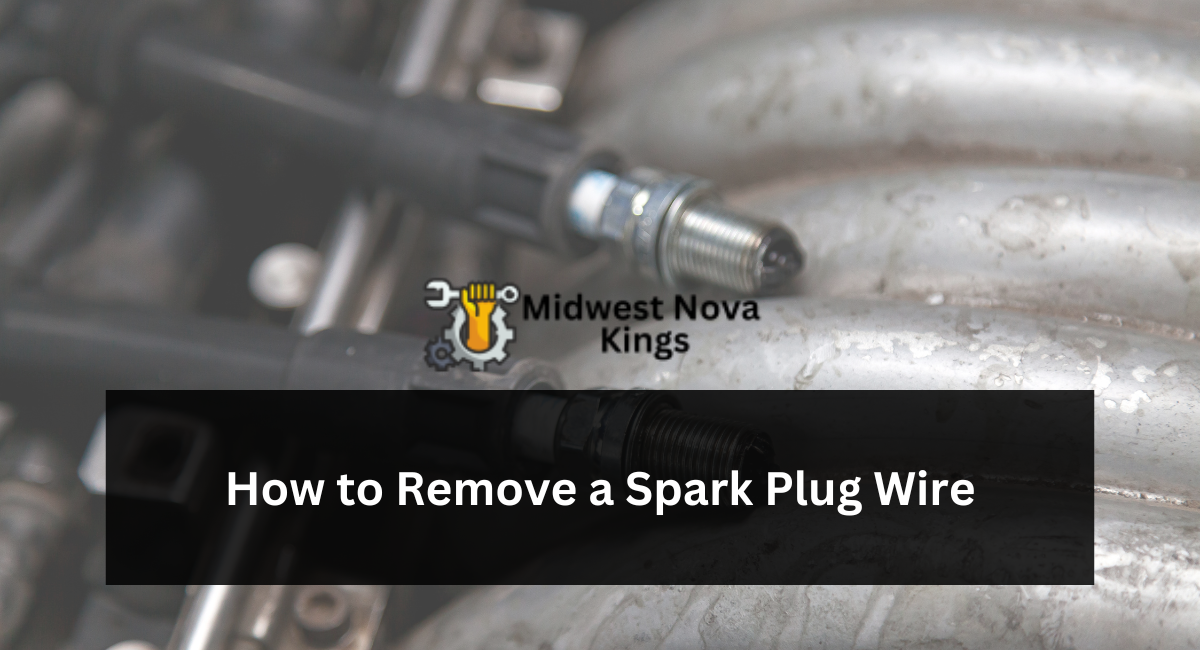Spark plug wires may not be expensive components on your car, but they’re certainly among the most vital. If it fails to perform as intended, its failure could cause engine misfires that result in serious engine malfunctioning and even serious injuries.
Family Handyman suggests checking spark plug wires for physical damage, dirt accumulation and proper firing order. Furthermore, it’s essential that any new wire set matches its length with that of its predecessor set.
Remove the Boot
If a spark plug wire becomes damaged, it can short to ground, leading to misfires and other engine problems. A spark plug boot helps prevent this by protecting its wire and keeping it away from coming in contact with metal parts of the vehicle’s engine.
Examine each spark plug wire carefully in a well-lit area to check its boot is undamaged and look for signs of physical damage such as cuts or scorch marks, corrosion between boot, spark plug, coil as well as spring clips holding spark plug wires within distributor caps – these clips may become easily damaged, leading them to slip out of position resulting in wires becoming dislodged from their position and falling out.
If you own a spark plug wire puller tool, use it to remove the old boot from the end of the spark plug. Otherwise, try grasping and twisting it using pliers so as not to accidentally contact any conductor wires as this could give an electric shock.
Replace one spark plug wire at a time, beginning with the longest wire, to avoid accidentally switching over any wires in your engine. Also consider matching length of each replacement wire to its predecessor so as to hear an audible “click” when installing correctly.
Unplug the Wire
As their name implies, spark plug wires transport electrical current from an ignition system to the vehicle’s spark plugs. Any beginner auto mechanic course student understands the critical nature of this delivery to engine combustion; failure to ignite spark plugs properly could result in misfires and poor gas mileage for their vehicle.
Spark plug wires consist of a central conductive wire covered with insulation and protected with either EPDM or silicone rubber jacketing to avoid sparking or voltage leakage. Underneath this conductor are typically fiberglass braided wires for additional strength and flexibility while their jacket provides protection against heat, chemicals and corrosion.
Before replacing a spark plug wire, first ensure you are working in a well-lit area and with access to specialized pliers designed specifically for spark plug wire removal.
Carefully clean each spark plug wire, inspecting them for physical damage such as cuts and scorch marks as well as corrosion between its boot and spark plug, distributor cap terminal (if your vehicle employs such), boot and distributor (or coil packs with individual “on-plug”) coils and corrosion between their boots (if your vehicle uses coil packs with individual coils on plug coil packs).
Remove the Plug
If you attempt to disconnect a spark plug wire with the engine running, a sudden burst of electricity could potentially damage the vehicle and do serious harm to its interior components. Therefore, only work on vehicles which have reached ambient temperature before beginning any such work.
Once the boot has been taken off, you can begin working to extract the spark plug itself. For best results, grasp and twist carefully while grasping with pliers designed specifically for spark plug removal – or buy them at auto shops as there may be dedicated spark plug removal pliers available with small teeth that help dislodge it without harming wires or ignition coils.
Be wary not to overtighten the spark plug or you risk breaking its socket. If you are having difficulty turning it, some penetrating oil may help loosen it.
Once the old plug has been removed, you can install a new one. Just be sure that it fits your vehicle correctly and adheres to factory specifications by using a spark plug gap gauge if necessary.
Replace the Plug
Spark plug wires carry electrical energy from an ignition coil to the cylinders in your car and should provide maximum power when new, but when worn down can provide less or no spark.
When worn, spark plug wires may deliver lower power or no spark at all and lead to poor combustion and driving experience in your vehicle. To identify wear-and-tear issues in your spark plug wires, look out for burns on insulation, chaffing or visible arching that indicates they should be replaced immediately.
Do not replace spark plugs while your engine is running, as this could result in fire or engine damage. Also make sure your hood latch remains open while working on your engine to prevent accidental closing and falling onto you while working with wires.
Start by laying out your new spark plug wires so they’re fully extended and ready for installation. Next, match each to its respective old spark plug wire (it helps if they both match), matching up their numbers accordingly and taking steps to remove or mark its boot from where it connects to either module or distributor cap module or distributor cap module or distributor cap module or distributor cap module or distributor cap.
If this end cannot be unplugged directly then locate and mark its connection point before continuing.
Conclusion
In conclusion, removing a spark plug wire requires careful handling to prevent damage to the wire or the engine components. Being gentle and patient while twisting and pulling the boot from the spark plug is crucial.
Avoiding excessive force helps maintain the integrity of the wire and ensures a smooth removal process. Following these steps diligently ensures safe and effective removal of spark plug wires, allowing for maintenance or replacement without causing any damage to the engine or the vehicle’s electrical system.










